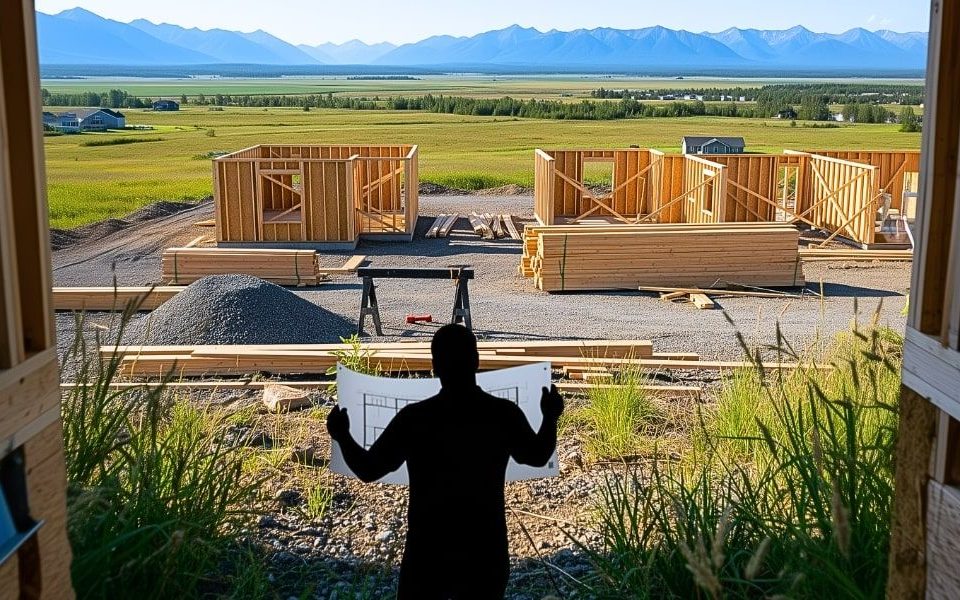
While headlines focus on potential population decline in Alaska, something steady and remarkable continues in the Matanuska-Susitna Valley. Drive through Palmer or Wasilla and you’ll see it: new roofs, fresh foundations, and more lights glowing against winter’s dark. The Valley has been quietly expanding for decades, even as much of the state holds steady or declines.
I’ve lived here my whole life, and one thing’s clear: this growth isn’t hype. It’s families putting down roots because life here still makes sense.
Tripled Since the Early ’90s
Back in 1991, Palmer and Wasilla were small towns with wide stretches of hay fields and gravel roads between them. Since then, the Valley’s population has tripled. It’s one of the few regions in Alaska showing consistent, long-term growth.
Why? Because it’s livable. The commute to Anchorage is manageable, the winters are slightly milder, and there’s still room to build. That combination is getting harder to find closer to the city.
Today, roughly one in every eight Alaskans calls the Valley home. And that share keeps inching upward.
A Bedroom Community That’s Becoming Its Own Hub
For years, locals called Palmer and Wasilla “bedroom communities,” places where people lived but didn’t necessarily work. About a quarter of residents still commute to Anchorage, but that’s changing.
Service industries, schools, and local businesses are growing to meet demand. More people stay and spend where they live. You can feel the shift: fewer long commutes, more local jobs, and stronger community ties.
It’s growth without the big-city sprawl, and that’s a balance people here appreciate.
The Millers’ Move
Take the Millers, for example. They moved from Anchorage to Wasilla in 2018, looking for space to raise their kids and start a small construction business. At first, they commuted to the city for work. Within three years, every project they took was right in the Valley.
Now, their crew has bookings months in advance. Their kids go to school nearby, and they’ve built friendships that stretch across Palmer and Big Lake. “We came for more space,” they told me, “but stayed because this place feels like ours.”
That same pattern is repeating for hundreds of families. Once people settle here, they tend to stay.
The Ripple Effects on Real Estate
This steady population growth shapes the housing market in practical ways. Even when statewide numbers soften, the Valley stays resilient. Builders keep working, inventory stays tight, and entry-level homes still move quickly.
Over 60% of all new construction statewide happens right here in the Valley. Land availability, builder capacity, and buyer demand all converge, keeping prices stable and opportunity alive.
Anchorage sees limited new development and older housing stock. That’s why the Valley continues to attract younger families and remote workers who want more space for their money.
Curious how this steady growth affects your home’s value? Check out our blogs and Market Memo for updated Valley numbers and latest insights.
Why People Choose the Valley
Ask newcomers what brought them here, and you’ll hear the same themes:
- Access to Anchorage without the congestion.
- Room to build or garden while staying close to schools and services.
- A sense of community strong enough to feel small-town but large enough to support growth.
It’s not just affordability. The quality of life is something numbers alone can’t capture.
What the Growth Means Going Forward
If current trends continue, the Matanuska-Susitna Valley will remain Alaska’s population anchor outside Anchorage. That means steady infrastructure investment, stable home values, and lasting opportunity for both buyers and sellers.
While much of Alaska focuses on population decline, the Valley tells a different story, one built on quiet, practical optimism.
FAQs Mat-Su Valley Growth and What That Means for Real Estate
1. Why is the Valley growing when other parts of Alaska are shrinking?
The Valley offers a rare mix of affordability, job access, and quality of life. The commute to Anchorage is reasonable, but many residents now find work right here. That steady balance drives long-term population growth.
2. How does Valley growth affect home prices?
Prices in Palmer and Wasilla remain stable even when other markets cool. Consistent demand and limited inventory create a reliable environment for both homeowners and new buyers.
3. Are there still opportunities to build in the Valley?
Yes. The Valley still has buildable land and local contractors ready to take on projects, especially compared to Anchorage’s tighter market.
4. What types of homes are most in demand?
Entry-level and family homes move fastest. Properties with land or space for workshops and gardens also attract strong interest from Alaskans looking for self-sufficiency.
5. How does commuting factor into housing decisions?
Many residents accept a 40–60-minute drive to Anchorage in exchange for more space and lower costs. But as more businesses open locally, commutes are shortening.
6. What’s the outlook for 2026 and beyond?
Forecasts predict gradual, steady growth to continue. Infrastructure projects, schools, and new services are likely to expand alongside population growth.
7. Is Valley growth sustainable long-term?
Yes, if development remains balanced. The community values open space and careful planning, priorities that keep the Valley livable even as it grows.
Learn More About How Valley Growth Can Support Your Next Move
The Valley isn’t booming. It’s building: one family, one foundation, one small business at a time. Most folks don’t realize until they look closely that Palmer and Wasilla are now the heartbeat of Alaska’s housing future.
Let’s look at what’s really happening in the local market, not just the statewide headlines. Contact our team for guidance in navigating the Mat-Su Valley real estate market.



